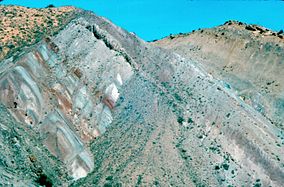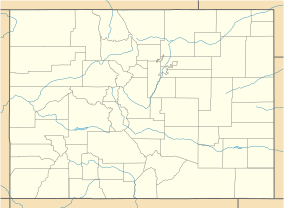Dinosaur National Monument
| Dinosaur National Monument | |
|---|---|
|
IUCN category III (natural monument or feature)
|
|

Multicolored beds of the Brushy Basin Member of the Morrison Formation near Carnegie Quarry
|
|
| Location | Moffat County, Colorado / Uintah County, Utah, US |
| Nearest city | Vernal, Utah |
| Coordinates | 40°32′N 108°59′W / 40.533°N 108.983°WCoordinates: 40°32′N 108°59′W / 40.533°N 108.983°W |
| Area | 210,844 acres (853.26 km2) |
| Established | October 4, 1915 |
| Visitors | 360,584 (in 2005) |
| Governing body | U.S. National Park Service |
| Website | Dinosaur National Monument |
Dinosaur National Monument is a U.S. National Monument located on the southeast flank of the Uinta Mountains on the border between Colorado and Utah at the confluence of the Green and Yampa Rivers. Although most of the monument area is in Moffat County, Colorado, the Dinosaur Quarry 40°26′29″N 109°18′04″W / 40.44139°N 109.30111°W is located in Utah just to the north of the town of Vernal, Utah.
The nearest communities are Vernal, Utah and Dinosaur, Colorado. This park contains over 800 paleontological sites and has fossils of dinosaurs including Allosaurus, Deinonychus, Abydosaurus (a nearly complete skull, lower jaws and first four neck vertebrae of the specimen DINO 16488 found here at the base of the Mussentuchit Member of the Cedar Mountain Formation is the holotype for the description) and various long-neck, long-tail sauropods. It was declared a National Monument on October 4, 1915.
The rock layer enclosing the fossils is a sandstone and conglomerate bed of alluvial or river bed origin known as the Morrison Formation from the Jurassic Period some 150 million years old. The dinosaurs and other ancient animals were carried by the river system which eventually entombed their remains.
...
Wikipedia

